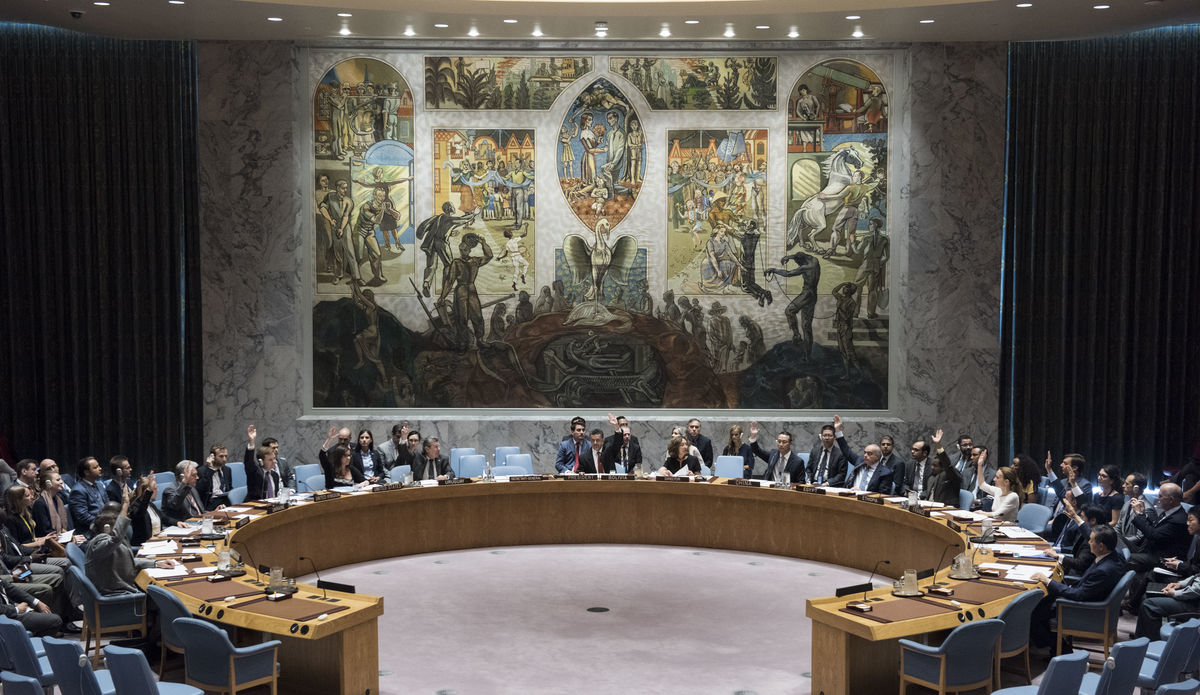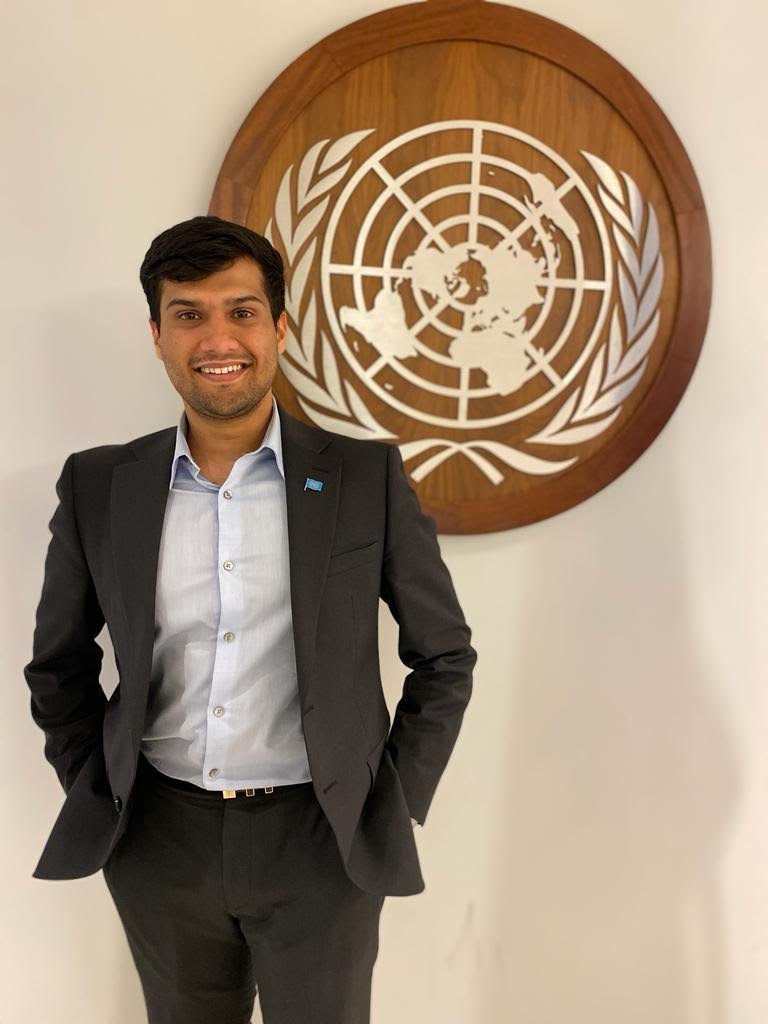The Demise of the Syria Cross-Border Aid Mechanism

Published by The Lawfare Institute
in Cooperation With

Editor’s Note: This piece was adapted from the Security Council Report’s August 2023 Monthly Forecast.
In July, the UN Security Council failed to adopt a resolution reauthorizing the Syria cross-border aid mechanism. As a result, a nine-year old mechanism, which enabled the delivery of humanitarian assistance into non-government-controlled parts of Syria without requiring the consent of the Syrian government, was shut down. The penholders (Switzerland and Brazil) put forward a draft resolution that included a nine-month extension of the Bab al-Hawa crossing at the Syria-Turkey border—which is used by UN humanitarian agencies and partners for conducting humanitarian operations. It was vetoed by Russia. (The term “penholder” refers to a Security Council member who leads the negotiation and drafting of resolutions on council issues.) In turn, Russia offered an alternative draft, which would have reauthorized the same border crossing for six months. It drew only two affirmative votes, well short of the nine votes needed for a resolution to be adopted.
The failure to reauthorize this long-standing mechanism gives rise to several pertinent questions regarding the humanitarian situation in Syria as well as the future engagement of the Security Council and other international actors in the country. Without a resolution reauthorizing the cross-border mechanism, can aid continue to flow predictably and unimpeded across the border into northwestern Syria? Will the Security Council remain engaged on humanitarian issues in Syria? And how will donors to Syria’s early recovery efforts respond to the failure to reauthorize the mechanism?
Background
The cross-border mechanism was authorized in July 2014 under Resolution 2165. It was born out of a lack of trust in the Syrian government’s willingness to distribute aid fairly into opposition-led areas. Since 2014, it has allowed the UN and its partners to provide cross-border assistance to 4.1 million people, 80 percent of whom are women and children. Since 2017, members have struggled to continue the mechanism because of diverging views of the council members. The initial resolution included four border crossings for the delivery of humanitarian aid in Syria. By 2020, however, only one crossing remained. China and Russia—the mechanism’s main opponents—have long argued that cross-border aid deliveries without the government’s consent were extraordinary measures that undermined Syria’s sovereignty and should be supplanted as soon as possible by “cross-line” assistance—which consists of supplies delivered via Syrian government-held areas.
Abstentions on reauthorization were common from 2017, and since 2019 all but two adoptions (S/RES/2585 and S/RES/2672) have come only after competing draft resolutions, vetoes, and resolutions that failed due to insufficient votes. Each agreement required diplomatic compromises and, at times, constructively ambiguous text to satisfy the demands of parties with competing interests. It seemed that it suited both Russia and Syria to allow the Bab al-Hawa border crossing from Turkey into northwestern Syria to stay open, as it gave them a platform to promote their views about the negative impact of unilateral coercive measures, to emphasize the importance of increased cross-line deliveries, and to advocate for enhanced support for early recovery projects in Syria. (For more on this, see our “In Hindsight” from August 2020, titled “Six Days, Five Resolutions, One Border Crossing.”)
Initially, this year’s negotiations appeared to be unfolding according to this familiar pattern. Members were divided over the duration of the cross-border aid mechanism, language on cross-line assistance, the proposed expansion of humanitarian activities in Syria, reference to unilateral coercive measures, and the prospect of authorizing two additional border crossings (Bab al-Salam and Al Ra’ee) in addition to Bab al-Hawa.
Geopolitical events significantly heightened tensions around this year’s negotiations, including the protracted war in Ukraine, a mutiny in Russia, the faltering grain deal between the UN and Russia, and Sweden’s and Finland’s strides toward NATO membership. What’s more, in February, a 7.8 magnitude earthquake struck northern Syria and Turkey, further intensifying humanitarian challenges. In connection with the earthquake, approximately 6,000 people died and more than 12,000 were injured in Syria. In response, Syria opened two additional border crossings from Turkey into northwestern Syria—Bab al-Salam and Al Ra’ee—for the delivery of humanitarian aid for three months beginning on Feb. 13. These crossings were extended by the Syrian government for three more months on May 13, and were cited in bilateral discussions with council members and UN Secretariat personnel as possible models for aid delivery if the UN cross-border mechanism were to be shut down.
Negotiations Down to the Wire
With a July 10 deadline for reauthorization fast approaching, the penholders circulated an initial draft on June 29, proposing a 12-month renewal of the Bab al-Hawa border crossing. From the start of negotiations, members were divided over this duration and the number of crossings. The United Kingdom and the United States, among others, advocated for the authorization for the Bab al-Salam and Al Ra’ee crossings. Russia, in turn, strongly opposed a 12-month extension and instead proposed six months. China maintained that a 12-month extension required strengthening the resolution’s language on cross-line deliveries and early recovery efforts. Neither Russia nor China supported authorizing additional crossings.
The draft the penholders placed under silence procedure on July 6 included a 12-month authorization of the Bab al-Hawa border crossing, while introducing new language on cross-line deliveries, expanding humanitarian activities to include humanitarian mine action, and acknowledging the scale of the displacement crisis in Syria. (Silence procedure refers to a practice whereby following negotiations the penholders circulate a draft with a deadline for raising objections. Any council member may request an extension and/or break the silence, which could lead to further negotiations.) Russia broke silence the next day, placing under silence its own draft text, which included a six-month reauthorization of the Bab al-Hawa crossing and requested that the UN secretary-general provide a special report on the impact of unilateral sanctions on the humanitarian situation and needs in Syria by Dec. 10.
In an attempt to bridge the differences between their draft and Russia’s, the penholders subsequently revised their draft again and put it into blue (which retained the 12-month mandate) on July 7. Soon afterward, Russia placed its own draft into blue. (Putting a draft in blue signals the readiness to call for a vote. The draft resolution is printed in blue ink, has a document number, is issued in provisional form, and remains in blue indefinitely unless withdrawn or turned into black when voted on.) The vote, planned for that day, was postponed. Over the weekend, the penholders continued to engage with council members, as well as with Syria, to find common ground.
On July 10, the United Arab Emirates (UAE) requested to postpone the vote to allow for further deliberations on the draft text. The 10 nonpermanent, elected members also held a meeting that morning, which resulted in joint support of a compromise: a nine-month reauthorization for the Bab al-Hawa border crossing proposed by the A3 members (Gabon, Ghana, and Mozambique) and the UAE. Later that day, in an attempt to strike a deal, the UAE conveyed a number of textual edits from Russia and Syria to the penholders. These included a six-month reauthorization of the Bab al-Hawa border crossing with a provision for a three-month extension with the written consent of the Syrian government. Ultimately these were not incorporated, as the penholders believed that most council members would not find them acceptable.
With the existing cross-border authorization expiration just hours away, the penholders circulated a revised version of their previous draft in blue, authorizing the Bab al-Hawa crossing for nine months. This text and the Russian text were scheduled for a vote the next day, July 11. Ultimately, neither draft was adopted: The penholders’ draft received 13 votes in favor and one abstention (China) but was vetoed by Russia. The draft initiated by Russia received two votes in favor (China and Russia) and three against (France, the United Kingdom, and the United States), while the 10 elected members abstained.
In the past, a Russian veto on this issue—this was their fifth Syria cross-border-related veto since 2019—did not signal the end of the road for reauthorization. Rather, it seemingly became part of the negotiation process, often leading to new drafts from both the original authors and Russia and, ultimately, an acceptable text. For example, in July 2020, before arriving at an agreement, the council members failed to agree on two draft resolutions: two put forth by Russia that did not receive the requisite number of votes to be adopted and two by the then-penholders on the Syria humanitarian file (Belgium and Germany) that were vetoed by China and Russia. This time, however, Russia did not appear willing to continue negotiating despite the penholders’ efforts to engage with council members to find compromises and revive the mechanism. Russian Ambassador Vasily Nebenzya said, before the July 11 vote on the Russian draft, “if our draft resolution does not pass, the mechanism can as well shut down.”
Council Dynamics
The mechanism’s reauthorization had wide support among council members. During the June 29 council briefing on political and humanitarian developments in Syria, a majority of council members advocated reauthorization of the mandate, including European members (Albania, France, Malta, Switzerland, and the U.K.), the A3, Brazil, Ecuador, Japan, the UAE, and the U.S.
The Syria humanitarian track has a history of strong elected member engagement. Since the track’s creation by Australia and Luxembourg in 2014, elected members have continued to play a crucial role in leading the track as penholders as well as supporting cross-border humanitarian aid operations in Syria. The 10 elected members have usually been cohesive on this issue and in the past two years delivered joint statements in support of the cross-border mechanism before the votes. This year, the penholders were strongly supported by the other elected members in their attempts to obtain agreement on their draft resolution, and, for the first time, the A3 also delivered a joint statement expressing support for the nine-month mandate and the elected members’ position, stating that they would vote for the penholders’ draft.
The penholders have often had to tread a fine line between the demands of the P3 members (France, the U.K., and the U.S.) and those of China and Russia. This balancing act has become increasingly difficult as relations between the P3 and Russia deteriorated following Russia’s invasion of Ukraine. And as more countries reestablish diplomatic ties with the Syrian government, some elected members may find it harder to be as supportive of positions that are not favorable to the Syrian government. For instance, some elected members such as the A3 and the UAE believe that normalizing relations with the Syrian government could play a critical role in addressing some of the key challenges such as the humanitarian situation and facilitating the safe and voluntary return of refugees.
The Aftermath
On July 13, Syrian Ambassador Bassam Sabbagh informed the president of the Security Council of the Syrian government’s decision to grant the UN and its specialized agencies permission to use the Bab al-Hawa crossing to deliver humanitarian aid to civilians in need in northwestern Syria, “in full cooperation and coordination with the Syrian Government,” for a period of six months, starting that day.
On July 14, the UN Office for the Coordination of Humanitarian Affairs (OCHA) circulated a note to council members stating that the “Syrian Government’s permission can be a basis for the [UN] to lawfully conduct cross-border humanitarian operations via the Bab al-Hawa border crossing for the specified duration.” However, OCHA raised concerns about the “conditions” set out in the Syrian government’s letter, including that the UN should not communicate with entities designated as “terrorist,” and that the International Committee of the Red Cross (ICRC) and the Syrian Arab Red Crescent (SARC) should supervise and facilitate the distribution of humanitarian aid in northwestern Syria. OCHA said that the UN and its partners must continue to engage with relevant state and non-state parties as operationally necessary to carry out safe and unimpeded humanitarian operations, in line with the mandate of the emergency relief coordinator under General Assembly Resolution 46/182. The Syrian government’s demand that the ICRC and the SARC supervise and facilitate aid was neither consistent with the independence of the UN, nor practical, OCHA noted, as the ICRC and SARC are not present in northwestern Syria.
Following weeks of bilateral engagement, the UN and the Syrian government reached an understanding on the continued use of the Bab al-Hawa border crossing to deliver humanitarian aid into northwestern Syria, which was formalized through an exchange of letters (S/2023/603). In an Aug. 5 letter addressed to Sabbagh, UN Under-Secretary-General for Humanitarian Affairs and Emergency Relief Coordinator Martin Griffiths noted that “[c]ooperation and coordination with the Syrian government to facilitate cross-border assistance can be undertaken in a manner consistent with the core principles and current structure and practice that comprise the UN’s humanitarian response in Syria.” Griffiths’s letter stated that a version of the UN Monitoring Mechanism (UNMM) should operate to monitor UN humanitarian assistance prior to its entry into Syria. (The UNMM, established in July 2014 by Resolution 2165 and most recently renewed by Resolution 2672, monitored the UN and partners’ cross-border consignments flowing through council-authorized border crossings. The mandate for the UNMM at the Bab al-Hawa border crossing expired along with Resolution 2672.) In response to the Syrian government’s demand, contained in its July 13 letter, to allow the ICRC and the SARC to supervise and facilitate the distribution of humanitarian aid, Griffiths’s letter stated that, although neither organization has a presence in northwestern Syria, “their involvement in this process may be explored when circumstances permit.”
Sabbagh responded with a letter the next day reiterating the Syrian government’s decision to allow the UN and its specialized agencies to use the Bab al-Hawa border crossing. Further, Sabbagh’s letter also announced the Syrian government’s decision to extend its authorization for the use of the Bab al-Salam and Al Ra’ee border crossings for a period of three months, until Nov. 13. It also approved the use of the Sarmada and Saraqib crossings for cross-line operations—that is, across domestic conflict lines from Syrian government-held areas into areas outside government control—for a six-month period, until Feb. 1, 2024. Sabbagh’s letter took note of the UN’s desire to “use a version of the stringent and independent monitoring arrangements for aid consignments at the borders.” It also expressed appreciation for OCHA’s pledge, contained in its Aug. 5 letter, to appeal to donors to provide necessary funding for humanitarian activities. The letter also indicated that the Syrian government will continue to engage with the UN about the possible involvement of the ICRC and the SARC in the ongoing humanitarian operations. (For more on this, see our Aug. 18 “What’s in Blue” story.)
Some council members, including China, Russia, and the UAE, welcomed the Syrian government’s decision. These countries now view the delivery of aid into northwestern Syria as a bilateral matter between the UN and the Syrian government, and have encouraged the international community to support such cooperation. The P3 and like-minded member states, meanwhile, would like the council to reauthorize the cross-border mechanism, including the UNMM. They believe a robust oversight mechanism would promote the predictable and unhindered delivery of humanitarian aid into northwestern Syria. There are also concerns among donor countries such as the United States, the United Kingdom, Japan, and France that in the absence of a robust monitoring mechanism, aid could be diverted, looted, or prevented from reaching certain communities.
The Implications
With the difficult negotiations in recent years, many council members and UN officials understood that the cross-border mechanism would eventually come to an end. Still, the abrupt end to council authorization of the mechanism in July took many council members and UN Secretariat officials by surprise.
Some council members have used the Syrian government’s decision to open the Bab al-Hawa border crossing to strengthen their call for permanently shutting down the council-authorized mechanism. Other members object, asserting that the council needs to maintain a leading oversight role.
More broadly, the council’s future engagement on Syrian humanitarian issues is under scrutiny. Russia has asserted that the absence of a resolution reauthorizing the cross-border mechanism now negates all council engagement on Syria humanitarian issues and nullifies the effect of all provisions contained in the previous resolutions, including the reporting requirements on the humanitarian developments in Syria. Some other council members take the view that the provision reauthorizing the cross-border mechanism, and the remainder of Resolution 2672, are mutually exclusive—that all the provisions except the cross-border mechanism are open ended and thus still applicable. Some council members have also argued that the reporting requirements as outlined in Resolution 2139 remain in effect.
The Syria humanitarian reporting requirements have long been robust, covering the secretary-general’s reporting on access to besieged and hard-to-reach areas (Resolution 2139 of February 2014) and the implementation of resolutions authorizing the cross-border aid mechanism (starting with Resolution 2165 of July 2014). Over time, trends in UN cross-line operations and early recovery projects were also incorporated into the reporting, among other issues. The framework included a monthly briefing from the secretary-general to keep the council abreast of humanitarian developments. Some council members such as China and Russia question whether these reporting requirements remain in effect.
Some council members, particularly donor countries, appear to believe that the lack of a new resolution authorizing the cross-border mechanism may complicate their ability to continue funding early recovery projects in northwestern Syria. In remarks during the July 24 council briefing, French Ambassador Nicolas de Rivière said that “by censoring cross-border access a few days ago, Russia at the same time put an end to the mandate given to the [UN] to engage in early recovery activities.”
With the Syrian government keen to prove its legitimacy and to normalize ties with the international community, members will be watching carefully to see whether aid delivery is in line with the humanitarian principles of humanity, impartiality, neutrality, and independence. Should the government fall short, members may once again seek ways of ensuring greater transparency and accountability in the delivery of humanitarian aid into Syria.








